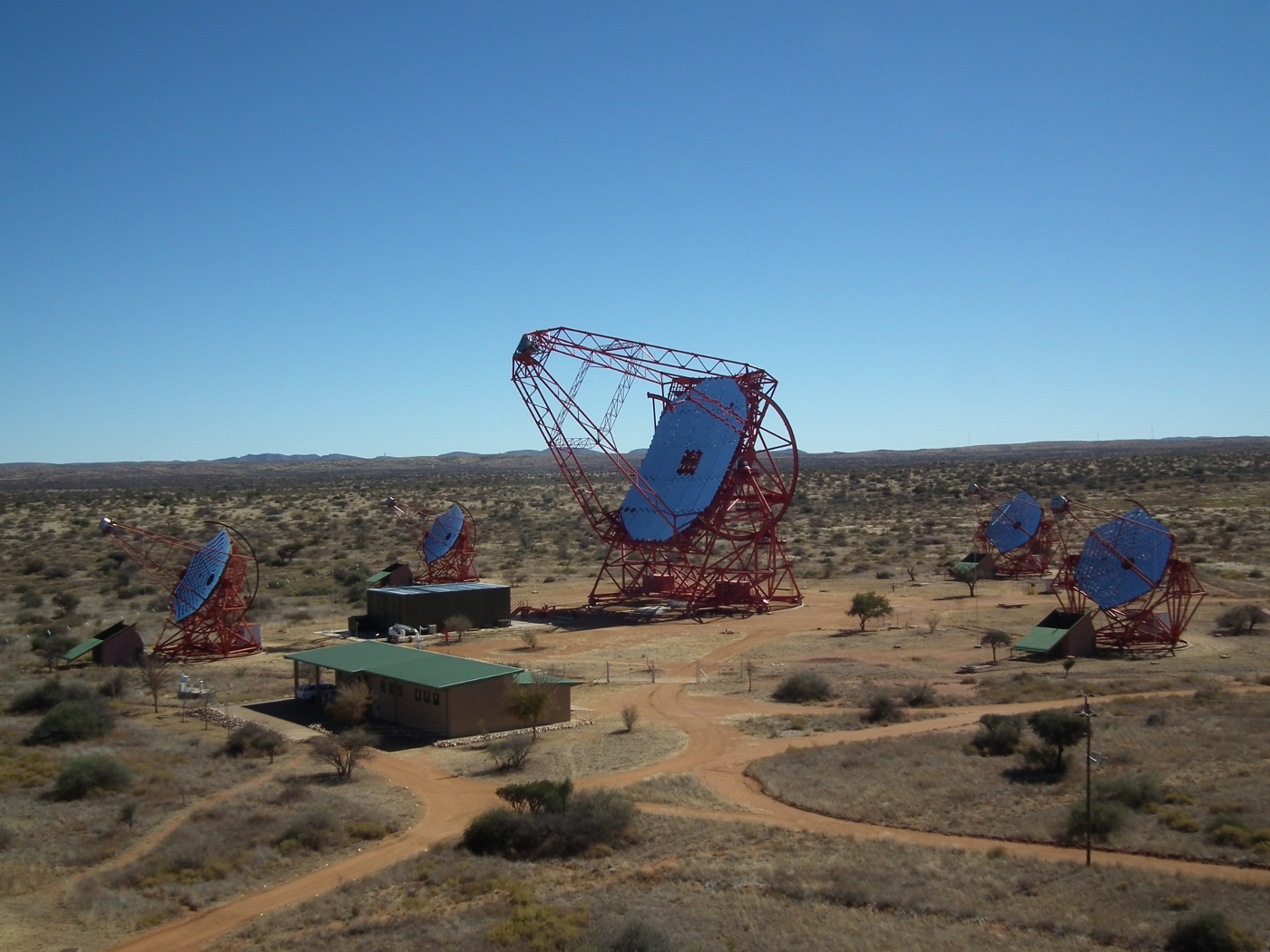Astronomy Object of the Month: February 2024
< previous Archive next >
Pulsar and gamma rays with record energy
Pulsars are fast-rotating neutron stars endowed with very strong magnetic fields. Although it has been more than 55 years since
their discovery, the mechanism responsible for their radiation is still mysterious.

Illustration: It is believed that the energies of infrared light photons from the pulsar's poles are amplified to gamma-ray (blue) energy by ultrarelativistic electrons. (Science Communication Lab for DESY)
Astrophysicists at the H.E.S.S. Observatory in Namibia have discovered the highest energy gamma rays ever from the Vela pulsar. The energy of the photons of this radiation reaches 20 teraelectronvolts, which is as much as ten trillion times the energy of photons in visible light. As reported by the international team, which included astronomers from Jagiellonian University in Kraków, these observational results are difficult to reconcile with the current theory of the formation of high energy gamma rays in pulsars.
Pulsars are the left-over corpses of stars that spectacularly exploded in a supernova. The explosions leave behind a tiny, dead star with a diameter of just some 20 kilometres, rotating extremely fast and endowed with an enormous magnetic field. Such a star is made up almost entirely of neurons and is also extremely dense: a teaspoon of its matter has a mass of more than five billion tons, or roughly 900 times the mass of the Great Pyramid of Giza.
Pulsars also emit rotating beams of electromagnetic radiation. They can be compared to cosmic lighthouses. If their beam sweeps across our solar system, we see flashes of radiation at regular time intervals. These flashes, also called pulses of radiation, can be searched for in different energy bands of the electromagnetic spectrum. Their source is probably the fast electrons created and accelerated in the pulsar's magnetosphere as it travels toward its periphery. The magnetosphere is made up of plasma and electromagnetic fields that surround and co-rotate with the star. Heading outward from it, the electrons gain energy and then release it in the form of observed regular beams of radiation.
The Vela pulsar (PSR J0835-4510) located in the Southern sky in the constellation Vela is the brightest pulsar in the radio band of the electromagnetic spectrum and the brightest persistent source of cosmic gamma rays in the gigaelectronvolts (GeV) range. It rotates about eleven times per second. Above few GeV, however, its radiation ends abruptly. Scientists assume that the electrons reach the end of the pulsar’s magnetosphere and escape from it. Using long-term observations with the H.E.S.S. telescopes, a new radiation component at even higher energies has been discovered, with energies of up to tens of teraelectronvolts (TeV). This very high-energy component appears at the same phase intervals as the one observed in the GeV range. To attain these energies, the electrons might have to travel even farther than the magnetosphere, yet the rotational emission pattern needs to remain intact.
The result challenges the previous knowledge of pulsars. The traditional scheme, according to which particles are accelerated along magnetic field lines inside or slightly outside the magnetosphere, cannot explain the new observations well. We may be observing particle acceleration through a so-called magnetic reconnection process outside the light cylinder that somehow preserves the rotation pattern, but even this scenario faces difficulties in explaining how radiation of such extreme energy is produced.
The Vela pulsar, apart from its other superlatives, holds the record as the pulsar with the highest-energy gamma rays discovered to date.

Illustration: The H.E.S.S. (High Energy Stereoscopic System) Observatory is a network of five Cherenkov telescopes for observing cosmic gamma rays. The observatory operates as part of an international cooperation. The telescopes are located in Namibia, near Mount Gamsberg, in a region known for its excellent conditions for astronomical observations. (Photo: M. Ostrowski).
Original publication:
The H.E.S.S. collaboration, Discovery of a Radiation Component from the Vela Pulsar Reaching 20 Teraelectronvolts, Nature Astronomy (2023).
The findings described are part of a study conducted in the Department of High Energy Astrophysics of the Jagiellonian University Astronomical Observatory in Kraków. The participation of Polish scientists in the H.E.S.S. project was co-financed from the program of the Minister of Education and Science "Support for participation of Polish scientific teams in international research infrastructure projects" under agreement no. 2021/WK/06.
|
Łukasz Stawarz Astronomical Observatory Jagiellonian University Łukasz.Stawarz [@] uj.edu.pl |


